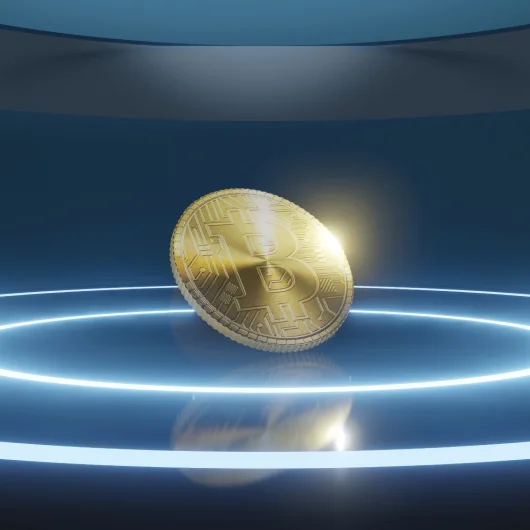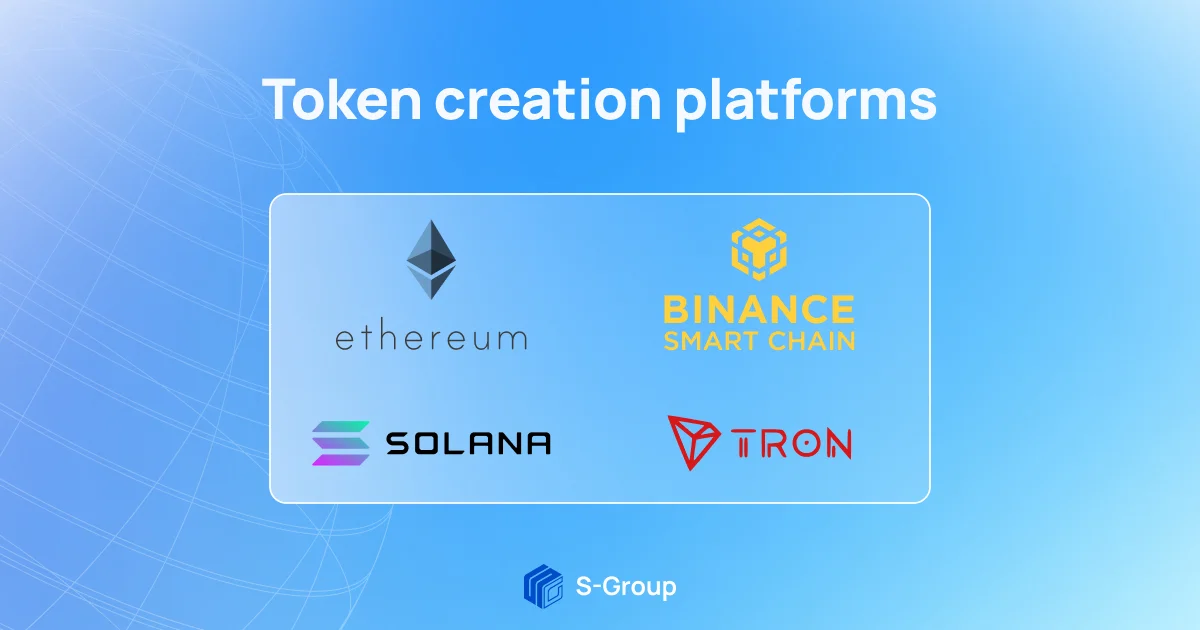Creating tokens on existing blockchains

The main difference between tokens and coins is that coins are created on their own blockchain, while tokens are created on an existing blockchain. Creating a token requires less technical expertise than creating a new coin.
Today we're going to talk about how tokens are created and the platforms on which they can be created.
How tokens are created and on which platforms
As written above, tokens are created on an existing blockchain. This characteristic is an important advantage because creating a token on an existing blockchain increases its reputation and security. The functionality of tokens is more extensive than that of coins. They can be used as a means of payment, exchanged for other cryptocurrency, but in most cases, they give holders benefits within the project.
For example, holders of an S-Wallet ecosystem SWP service token can use it to passively earn money in staking or liquidity mining programs, as well as receive discounts on fees and access to unique system functionality that is not available to other users.
To create a token, you will need a team of technical specialists and a platform on which to develop the cryptocurrency. The most popular solutions are Ethereum, Binance Smart Chain, Solana, Tron.
Let's take a closer look at popular blockchains on which you can create tokens.

Ethereum
Ethereum is the second most capitalized cryptocurrency and popular blockchain network, which was launched in 2013. Ethereum is the first decentralized blockchain platform that is designed to launch smart contracts. They allow participants in the network to transact with each other without the involvement of a third party. Security is guaranteed by a software code that spells out the terms of the transaction between the two parties.
The Ethereum blockchain has a native cryptocurrency, Ether (ETH), which supports the blockchain through transaction fees. One of the biggest features of Ethereum is the ability to create unique tokens on the blockchain.
The most popular standard for developing tokens on Ethereum is ERC-20. It allows the development of blockchain tokens that can be reused by other applications, from wallets to decentralized exchanges. This standard is most often used to develop tokens for ICOs.
Tron
A decentralized blockchain network that is suitable for large-scale or complex enterprise-level token development.
The Tron blockchain network is focused on expanding the market for decentralized digital content applications by simplifying their creation and deployment. It is for these reasons that Tron is an advanced blockchain network for token development and decentralized applications (dApps).
Binance Smart Chain
Binance Smart Chain is the blockchain network of the cryptocurrency exchange Binance, which was developed in 2019. Members of the BSC network are able to create decentralized applications and earn money by stealing.
As of July 2021, Binance Smart Chain is processing up to 9 million transactions daily. As of May 2021, the current record daily high reached 11.83 million transactions.
BEP-20 is the standard under which Binance Smart Chain tokens are developed. The BEP-20 standard is considered to be analogous to the Ethereum network token standard - ERC-20. The main purpose of the BEP-20 standard is to provide developers with a flexible format for launching a wide range of tokens on the Binance Smart Chain blockchain network.
The S-Wallet ecosystem SWP token is also created in the Binance Smart Chain blockchain in accordance with the BEP-20 standard. With SWP tokens, users can pay transaction fees, receive additional discounts, participate in profit sharing through the Reward Pool, and enjoy a range of benefits across all products in the S-Wallet ecosystem.
Solana
A blockchain platform that is designed specifically for creating decentralized applications and smart contracts. It is an open-source project created by former Qualcomm employee Anatoly Rudenko, former BREW developer Greg Fitzgerald, and Eric Williams, PhD in particle physics.
The Solana project has actively started to gain momentum because it offered the cryptocurrency community something that one of the most popular Ethereum blockchain projects lacks: faster operation and low transaction fees.
The blockchain project has its own native Solana token under the ticker symbol SOL. The Solana token is currently the fifth most capitalized token. The reason for this is not only because of the low fees, but also because the Solana project is backed by some of the biggest investors in the cryptocurrency industry, such as Alameda Research, Andreessen Horowitz and Polychain.
SOL uses SPL, a token standard in the Solana blockchain similar to the ERC-20 standard in the Ethereum blockchain. There are three scenarios for using SOL:
- Stacking;
- transaction fees;
- management.
Solana's deflationary model involves burning SOL tokens.
Solana introduces a number of major innovations, such as the Proof of History blockchain synchronization algorithm. The Proof-of-History protocol is a way to optimize the time cost for transaction confirmation when organizing transaction order, which is used in tandem with Proof-of-Stake.
Proof-of-History allows to create a chronological record confirming that the event occurred at a certain point in time.
Prospects for creating and investing in tokens
Creating tokens or investing in digital crypto-assets are two ways to profit, both as an investor and as an asset creator. In 2021, cryptocurrencies delivered returns of up to 51,000%. Just imagine the profits both investors and project creators made.
So, to summarize, we can say that the prospects for both creating and investing in tokens are very impressive. But, always keep in mind the risks and the fact that cryptocurrencies are a volatile asset whose price can change up to several dozen times in one day.
So before investing in a cryptocurrency asset, assess whether you are ready for such volatility, and examine the project in detail for fraud. And when creating a token, be careful in choosing a blockchain platform and positioning the project in the community.
Share
Interesting
Would you like to receive a digest of articles?
One email with the best articles of the week.
Sign up so you don't miss anything.